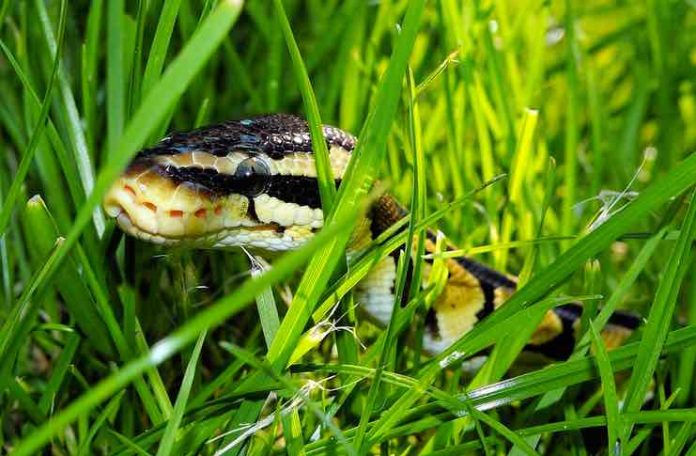Having a ball python as a snake can be an excellent experience for both a beginner and an advanced reptile lover. However, taking care of them requires a lot of knowledge. Even though some species are well known for their specific behavior in the wild, snakes in captivity act totally different, especially the newborn ones.
According to Pet Place, ‘In the wild, snakes often travel long distances in search of prey. Depending upon the species, this can be insects, bird eggs, frogs, small or large mammals. In captivity, the basic diet will consist of young frozen mice called “pinkies.” These come in different sizes at the pet store. Choose one about the size of the snake’s head. This will provide a meal without stressing the snake’.
It’s a common knowledge that snakes eat rodents; however, sometimes bringing them the food is not enough to encourage them to eat. Especially when it comes to baby snakes, you need to have few essentials in mind. Below we pointed out how baby ball pythons are likely to behave and how to feed them successfully.
Baby pythons are picky
Around 80% of the newly purchased baby ball pythons won’t eat right away from you. And that’s ok. The adaption to the new environment is a part of the settling process. On the other hand, the baby needs to eat. Around a week after bringing a new pupil to your place, you should start feeding trials.
What we recommend after bringing home a baby ball python is giving them time to settle in. Sometimes it can take more than seven days. Try not to mess with them, especially during the feeding day. If you stress them out, they may reject the food.
Small space
The first thing we recommend you is to put your baby ball python into a smaller closure that you would typically get for the snake. It can make getting used to its new environment easier, especially if your baby pupil is stressed out.
Before the feeding process, make sure you provide your pups with proper conditions, I mean the lightning, water, little cave’ ish place to hide, and the right temperature and humidity box. Good environmental conditions are essential for the snake to settle in, which brings you closer to feed it with success.
Nighttime – feed time
‘Animals that are diurnal are usually awake and active during the day. Nocturnal animals are usually awake and active during the night’ – that’s another thing to keep in mind when it comes to feeding your baby snakes – feed the diurnal species during the day and do the opposite with the nocturnal species. That’s the time when they would become naturally active in the wild and search for food. Ball Pythons are the nightcrawlers, which means it can be helpful to feed them after dark.
Make sure the food is warm
That’s an essential tip for feeding your baby ball python – the right temperature of the pinkies. Warm food is very important mostly for the nocturnal snakes, here is why. Nocturnal species, like ball pythons, have heat-sensing pit organs along their upper lips that ‘see’ the heat of their potential victims. The warm body of the mouse can be seen within a meter away.
Serving your baby ball python with a warm rodent helps your pupil identify the kill as a portion of actual food and encourage it to take it. If you have frozen pinkies, leave it for a couple of hours at room temperature. The best way to check if the mouse is not too cold inside is to squeeze it a little. If the baby snake will sense the cold food, it’s going to throw it back probably.
Another way of serving warm food is to put the rodent into a cup of hot water. Carefully though, when the mouse is frozen, it cools the water and stays cold itself. First of all, leave it a little at the room temperature, then you can try to make it warmer.
Anyways, a better way is to stick to the room temperature mostly because of the mouse the smell a little after being put into the hot water changes, which for a picky snake may turn into a none interesting food.
Life over frozen food?
That is the question…There are different opinions about this. If your baby ball python hasn’t eaten for a while, it’s easier to feed it with pre-kill, even cut it a little so the pupil can sense the meat. Most of the snakes do not mind the frozen pinkies; however, some snakes require the living rodents. I recommend you try it both ways and see the preferences of your baby snake.
The Bottom Line on How to Feed a Baby Ball Python
Summing up, the information we pointed out above should help you feed your baby ball python. Of course, snakes are individuals; all of them may have different needs and preparations. More observation you do, more you can learn about your new pupil. Make sure you provide them with fresh rodents and a proper environment, including hiding sports, lightning, temperature, and humidity levels.
Remember not to pet your baby ball python right away. Time to settle in is crucial for its further development. If, after a while, your baby ball python isn’t still up for food, you should go to the specialist and ask for help. There may be some issues you’re not able to notice.



